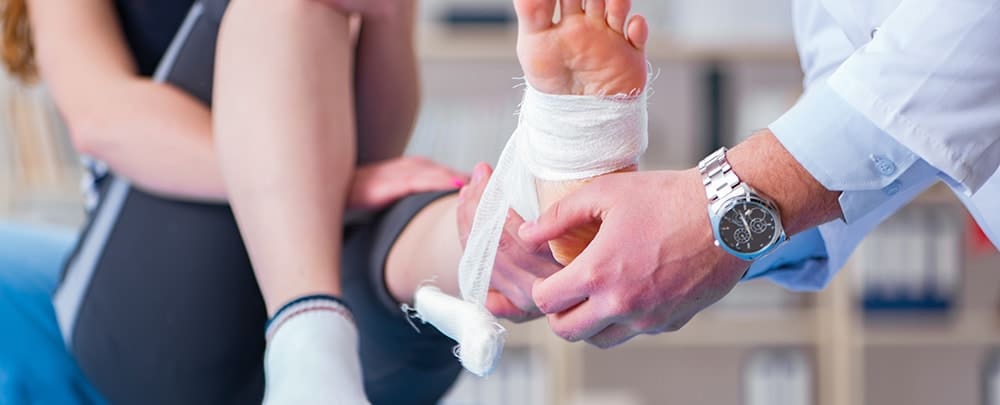Traumatic Injuries
After a traumatic injury has occurred, the first thing you’ll feel is the sharp, unexpected pain.
The second thing you feel? It’s that sinking sensation in the pit of your stomach, when you realize your entire season might have just come to a screeching halt. Your teammates will have to go on without you, while you’re stuck recuperating.
There’s no way around it: Traumatic injuries often mean substantial missed time away from what you love. However, when you treat your feet and ankles right and seek out advanced care from a specialist, you will shorten the length of time before you can get back to your lifestyle—and reduce the risk that you’ll suffer a re-injury or chronic complications down the line.
What Is a Traumatic Foot or Ankle Injury?
In the broadest sense, all foot and ankle injuries fall into one of two big categories: overuse injuries and traumatic injuries. Overuse covers aches and pains that develop slowly over time, or from repetitive activity. Heel pain, stress fractures, and shin splints are obvious examples.
Traumatic injuries, meanwhile, usually occur suddenly as the result of a specific impact or accident. For example: you go up for a header, but land awkwardly and another player steps on your ankle when it’s in a vulnerable position.
Common traumatic injuries include:
- Sprains (not just in the ankle)
- Tendon ruptures
- Pulled muscles
- Broken bones
- Turf toe
What Should I Do If I Suffer a Traumatic Injury to My Feet or Ankles?

First, you should stop what you’re doing and avoid bearing weight on the injured leg. You don’t want to make your injury any worse than it is. If the injury looks (or feels) severe, don’t mess around—get someone to drive you to the ER or call 911.
Then, you should call to schedule an appointment to come see us. All traumatic injuries should be accurately diagnosed and treated, and a foot and ankle sports injury specialist with advanced treatment options will be your best bet.
In the meantime, begin basic injury first aid, which you can remember with the acronym RICE:
- Don’t do anything to aggravate your injury. Avoid athletic activity.
- Use ice packs as directed to limit pain and swelling. Do not ice more than 20 minutes in a hour, and don’t apply ice directly to your skin.
- Use a compression wrap, brace, or athletic tape on the injured area.
- Try to keep your injured foot elevated to improve blood flow.
At Your Appointment
We will perform a complete physical examination as necessary to identify the nature, location, and extent of the injury. This might include the use of X-rays or other imaging tests. It’s important to get an accurate diagnosis before making any treatment recommendations.
Some of the main advantages of choosing the Colorado Center for Podiatric Sports Medicine is that we have decades of experience and advanced care options at our disposal, so we can offer effective treatment plans precisely tailored to your needs.
We’re trusted by professional athletes to get their players back in the game as quickly as possible, and we bring that same dedication to every patient we see. To schedule an appointment, give us a call at (720) 600-3380.
Visit Us
1551 Professional Lane, Ste. 105
Longmont, CO 80501
Contact us
(720) 600-3380 Tel
(720) 306-5430 Fax
Hours
By Appointment Only
Servicing Communities Along the Front Range and Beyond
© Colorado Center for Podiatric Sports Medicine | Privacy Policy

